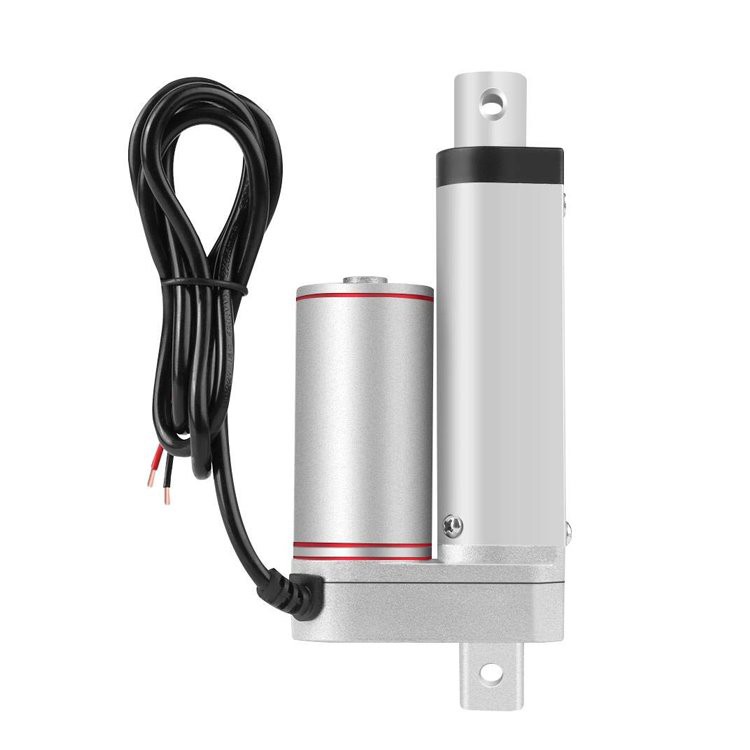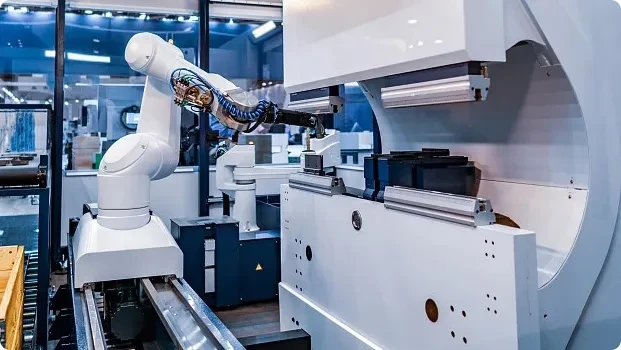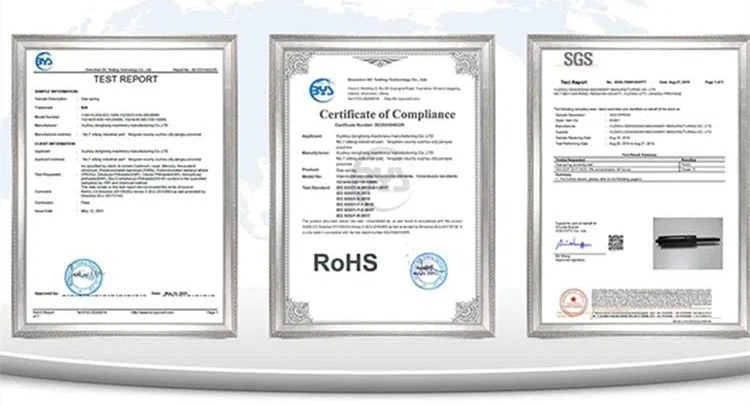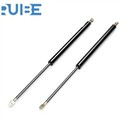Gas Damper

China Gas Damper Manufacturers Factory Suppliers
We are a professional Gas Damper factory, providing cabinet gas damper, gas damper for car etc.
Gas Damper are mainly made of high-quality stainless steel materials and are widely used in automobiles, beds, machines, mechanical equipment, ships, containers, etc. This product has been carefully designed and tested for excellent performance and usability.
Company Advantages
Professional Team
We have hundreds of professional and technical personnel who can provide you with professional services.
Multiple Certifications
We have ISOTS 169492009, CCC, SGS and CE certifications, ensuring the quality of our products.
Products are Well Received
Our products are globally exported, reaching various countries and regions, and have garnered widespread acclaim from satisfied customers.
Competitive Price
We provide competitive price and excellent customer service for all our customers. We also can offer different discounts based on your order quantity.
Customized Services
We can provide customized services to meet customers' special requirements. lf you have any special request, pls send us the details.
24-hour Online Customer Service
Our customer service is available online 24 hours a day. After receiving the service information or feedback from the customer, we will reply and address the feedback in the shortest time.
Introduction to Gas Damper
Gas dampers are also known as gas shocks or damped gas springs. A gas damper is a pressurized tube with a piston that dampens hydraulic forces. The piston moves into the tube, compressing the nitrogen gas.
Gas dampers are compact devices that integrate a gas spring and a damper in one unit. They are used to support moving masses while controlling the system's motion.

Product Advantages
The Gas Dampers are finished with a fine QPQ or chrome finish for an excellent finish, abrasion resistance, and rust resistance.
Gas Dampers are hardened to effectively prevent deformation from occurring and extend the life of the hydraulic rod.
Gas Dampers are quick and easy to install, do not require the use of complex tools, and are easy to disassemble and install.
Gas Dampers passed ISO9001 and ISO/TS 16949 International Quality System Certification.
Product Specification
|
Quality |
180,000 times -passed TUV fatigue test |
|
ROHS certificated by SGS |
|
|
Passed ISO9001 and ISO/TS 16949 International Quality System Certification |
|
|
Use |
Automobile; Auto, car; Furniture; Machines, mechanical equipment; Boat, container, etc. |
|
Material |
Steel/ss304/ss316 |
|
Color |
Silver/black/can be customized |
|
Connector |
Ball connector/metal eye/clevis and so on |
Types of Gas Damper
Our company currently mainly produces Cabinet Gas Damper and Gas Damper for Car Gas Damper.

Cabinet Gas Damper
A cabinet gas damper is a pressure damper that can be used on cabinets, windows, and other applications. It is a gas spring filled with nitrogen that can prevent cabinet doors from slamming, reduce noise, and avoid finger injuries.
Gas Damper for Car
Gas Damper for Car, also known as gas struts or gas shocks, are hydraulic shocks that use low-pressure gas or oil to slow down motion. They are used in cars, trucks, airplanes, and on doors.

Advantages of Gas Damper

Cabinet Gas Damper
Cabinet gas struts are used in various types of Cabinet. Their main application is to move objects. Cabinet gas struts have several advantages, including:
● Low maintenance: The parts are enclosed in a cylinder, so they require little to no maintenance.
● Long-lasting: Gas spring dampers don't contain coiled metal, so they are exposed to less mechanical stress and last longer than traditional springs.
● Ease of use: Gas struts are a reliable and efficient option for lifting cabinet doors and beds.
● Automatic and noiseless opening: Gas springs and dampers can gently slow down a door or lid as it reaches full extension.
● Controlled movement: Gas springs use the ideal amount of force to create controlled movement.
● Ergonomic design: Gas springs are available in non-locking and locking models.
Gas Damper for Car
Gas Damper for Car, also known as shock absorbers, play a vital role in a car's ride and handling. They help keep tires on the road, prevent excessive bouncing, and keep the car stable and balanced. Dampers also help manage a vehicle's stability, cornering, handling, traction, braking, stopping distance, and overall safety.
Gas Damper for Car can have several advantages for cars, including:
● Improved handling: Gas charging can improve a vehicle's handling, especially when turning corners.
● Reduced vibration: Gas charging can reduce excessive vibration from road roughness.
● Better grip: Gas dampers are suited for sports cars and have good grip on the road.
● Cooling: The gases in gas struts cool the oil and prevent it from frothing.
● Convenience: Gas pressure springs can help open and close tailgates and engine hoods with one hand.
● Long-lasting: Gas springs are low maintenance, long-lasting, and ergonomic.

Applications of Gas Damper

Cabinet Gas Damper
Cabinet gas dampers, also known as gas springs or dampers, are used in a wide range of furniture. They can be found in:
● Cabinet Doors: Gas dampers are commonly used in cabinets, especially in kitchen and office furniture. Cabinet gas dampers allow cabinet doors to open smoothly and close gently, preventing them from slamming shut. This feature adds convenience and helps protect the contents of the cabinet.
● Lift-Up Mechanisms: Cabinet gas dampers are often incorporated into lift-up mechanisms for furniture like coffee tables, desks, and storage beds. These mechanisms allow the top or a portion of the furniture to be easily lifted and held in position for access to storage compartments.
● Convertible Furniture: Multi-functional furniture pieces like sofa beds and transforming tables often employ gas dampers to enable easy conversion between different configurations.
Gas Damper for Car
Gas dampers are used in cars for a variety of purposes, including:
● Opening and closing: Gas springs help users open and close doors, hatches, and other fixtures. They also help open and hold components like hoods, trunks, and tailgates.
● Suspension: Gas struts are used in vehicle suspension. They have a coil spring to support the vehicle's weight and a shock absorber to absorb and dampen vibrations and shocks.
● Dampening movement: Gas pressure springs gently dampen the movement of hoods and lids so they drop smoothly into the lock.
● Steering and engine dampers: Gas pressure springs are also used as dampers elsewhere in motor vehicles, as steering dampers or engine dampers.

Working Principle of Gas Damper

Gas dampers, also known as gas springs, rams, or struts, use a piston and rod mechanism to move back and forth through a sealed tube. When pressure is applied to the piston, it moves into the tube, compressing the gas inside. This compression creates resistance, which exerts a force.
The works because the gas strut extends and this is due to the difference in cross-sectional area of the rod where the gas is unable to exert any pressure. It is the difference between the nitrogen gas pressure acting on the internal face of the rod, and the atmospheric pressure acting on the external end of the rod that causes it to extend.
As the rod is pushed into the tube the available volume is reduced, gas is compressed and the internal pressure increases, this compression creates the spring like behaviour. An orifice in the piston that is attached to the rod allows the flow of gas across the piston and controls the extension speed.
As the rod is pushed into the tube the available volume is reduced, gas is compressed and the internal pressure increases, this compression creates the spring like behaviour. An orifice in the piston that is attached to the rod allows the flow of gas across the piston and controls the extension speed.

Component of Gas Damper
Storage Bed Mechanism
Gas dampers, also known as gas springs, have several components:
● Rod: Rods are either precision ground, polished carbon or stainless steel. The surface of the rod is treated to improve wear and increase corrosion resistance. In general, the rod will always be longer than the stroke of the spring and shorter than the length of the tube.
● Tube: The tubes used are either powder coated carbon or stainless steel high integrity seamless welded tube suitable for high pressures. The internal surface finish and tensile strength of the tube are critical to gas damper longevity and burst pressure performance.
● Guide and Seal Package: Manufactured from plastic composite, the guide and seal package provide a bearing surface for the rod, prevents the escape of gas and ingress of contamination.
● Piston Assembly: Manufactured from zinc, aluminium or plastic the piston assembly controls the rate at which the gas damper extends and compresses, it also serves to prevent the rod from being expelled from the spring. For safety reasons the integrity of the piston to rod attachment is critical.
● End Plug: This is used to seal the tube end of the gas damper and is where the tube end fitting attaches.
● Nitrogen Gas Charge: Nitrogen is used as it is inert and non-flammable and therefore does not react with any of the internal components.
● Oil: Provides lubrication for the seal and internal components, it also serves to provide the damping effect at the end of the gas dampers stroke.
Maintenance Tips for Gas Damper
Here are some maintenance tips for dampers:
Inspect: Visually inspect the damper's internal components for signs of corrosion, dirt, or dust.
Clean: Clean the damper regularly to remove any debris, dust, or grease buildup. You can use a soft brush or vacuum.
Test: Test your damper to ensure it opens and closes easily. A damper that is stuck or hard to open and close could signify rust, which means moisture.
Check blades: Check blades in the closed position to be sure all close tightly.
Adjust: If necessary, make adjustments to damper linkage or linkages.
Replace: Have your dampers fixed or replaced when they're not working properly. When getting a replacement fireplace damper, make sure it fits properly.
Precautions for using Gas Damper
Here are some precautions for using gas dampers:
Avoid sideways forces: Do not allow any sideways forces on the rod or tube.
Avoid contact: Sitting for too long, heavy objects are pressed for a long time,pat the surface of the leather cloth with your hands and stretch on both sides
Avoid contact: Do not allow any contact against the rod or tube.
Avoid bending torque: Do not allow any bending torque around the mounting points.
Avoid tilting or lateral force: Do not subject the gas spring to tilting force or lateral force during work.
Install downward: Install the gas spring piston rod downward as much as possible.
Avoid disassembly: Do not disassemble, weld, fuse, heat, or modify gas springs.
Avoid relative movement: The gas spring cannot have relative movement when it is in the closed and working state.
Avoid excessive stroke: An excessive stroke can have serious and obvious security risks that can cause permanent damage to the gas spring.
Avoid sudden or uncontrolled output piston rod: Prevent the output piston rod is sudden or uncontrolled.
Avoid exceeding maximum speed: Do not exceed the maximum speed specified in the file for each model.
Avoid scratching or denting the shaft: Scratching or denting the shaft will most certainly result to failure in your gas truck.
Avoid exposing to excessive heat: Never expose the gas strut to excessive heat.
Avoid applying external lubricant: Never apply an external lubricant to the shaft of the gas strut.
Gas Damper purchasing advice
When choosing a gas damper, you can consider things like:
Application
What the gas damper needs to do, such as lifting, holding, or lowering. You should also consider the weight or force it needs to support and any environmental conditions it may encounter.
Size
The length of the gas strut should be around 60% of the length of the lid, hatch, or door. The gas strut should be placed on the lid on 20% of the length.
Weight rating
The weight rating is the maximum weight or force a gas strut is designed to support safely. The weight rating is typically specified by the manufacturer and is measured in units such as Newtons (N), kilograms (kg), or pounds (lbs.
Certifications
Our products all have passed test of ISOTS 169492009, SGS, CCC and CE certification. The quality of our products is highly praised by customers.

Our Factory
We have professional production lines and advanced equipment.





Frequently Asked Questions
Q: What factors affect the dynamics of Gas Dampers?
Viscous friction (damping): This is a configurable characteristic, giving the ability of controlling the speed of compression or extension through an integrated damping element. The damping levels of a spring can be measured through dynamic testing and are usually illustrated through a gas damper characteristic (force – displacement) curve.
Dry friction: this characteristic is associated with moving parts contacting static parts. Although gas damper parts are lubricated, seals tend to damage the lubricating film after a period of inactivity, leading to what is referred as “stiction” or “breakaway friction”. Stiction is often experienced as a momentary force “spike” when a gas damper is compressed after a period of inactivity and can be minimized by using special fluids, low friction seals and highly finished rods
Progression or K-factor: The K-factor of gas dampers is highly configurable through rod to body combinations and the oil volume. Considering the characteristic curve of a gas damper, K-factor is the parameter defining its slope or gradient value
Q: What are the disadvantages of Gas Damper?
Stiffness: Gas dampers are stiffer than oil dampers.
Cost: Gas dampers are more expensive than oil dampers.
Design: Gas dampers have a more complicated design than oil dampers.
Sharp curves: Gas dampers can create air bubbles in the oil when driving in sharp curves.
Overloading: Gas lift springs can fail or become damaged if overloaded or used with more force than intended.
Leaking: Gas-charged shocks need to be replaced if they leak oil.
Q: Why is Gas Damper not working?
Pressure loss: A common reason for gas strut failure is a loss of pressure. This can be caused by a leak in the strut's seal.
Rust and debris: Problems with gas dampers are often caused by rust and debris. You can try cleaning the frame, damper plate, and rod.
Loose connection: Try plugging and unplugging the molex connector.
Q: Will the Gas Damper for Car malfunction?
Other signs of a defective gas damper include:
The tailgate no longer stays up or opens with difficulty
The boot, bonnet, hood, or door isn't staying open properly
Squeaking, knocking, or clunking sounds when driving over bumps or maneuvering at low speed
Q: What are the benefits of Cabinet Gas Damper?
Comfort: Gas struts allow the front part of a cabinet to remain open after tilting, which can make everyday tasks more comfortable.
Smooth movement: Gas dampers can provide smooth movement and stop.
Ergonomics: Gas springs are more ergonomic than traditional springs, producing a smooth action when exposed to a compressive force.
Support: Gas struts can provide lift assistance and counterbalance to applications.
Q: What are the faults of Gas Damper?
Incorrect operation: The damper doesn't allow the correct amount of smoke to escape.
Damper won't close: This can cause downdraft problems and allow air to escape from your home.
Damper won't open: This can make your fireplace inoperable until it's resolved.
Gradual loss of pressure: This can cause the strut to be unable to support the load. The component being supported may gradually creep down or drop without warning.
Leaking gas: If the strut is leaking gas, it will not be able to generate enough force and it will not work correctly.
Improper installation: This could result in carbon monoxide poisoning, fire, or explosion.
Catalytic failure: This involves a rupture of the pressurized chamber, causing a mini explosion.
Q: How many Cabinet Gas Dampers do I need?
We're professional gas damper manufacturers and suppliers in China, featured by quality products and competitive price. If you're going to buy discount gas damper made in China, welcome to get free sample from our factory.
120 volt ac linear actuator, heavy duty gas struts, 40n gas strut







